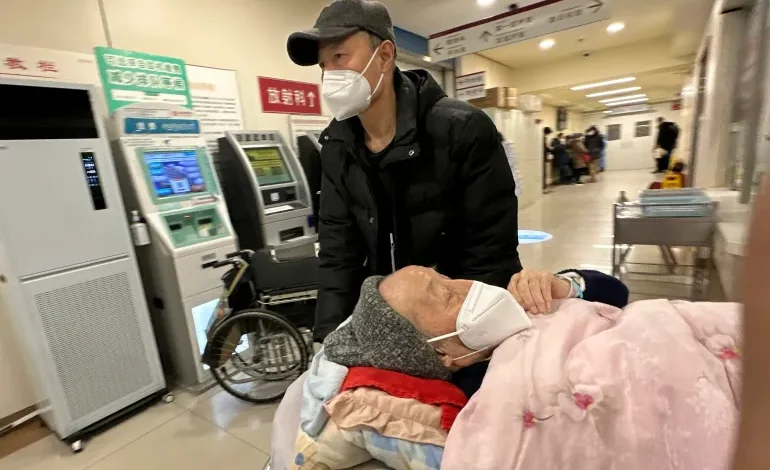China reports almost 60,000 COVID-related deaths in past month

China has reported nearly 60,000 deaths among COVID-affected people since early December after complaints it was failing to release data.
The toll from December 8 through Thursday consisted of 5,503 deaths due to respiratory failure caused by COVID-19 and 54,435 fatalities from other ailments combined with COVID-19, the National Health Commission announced on Saturday, adding that the “emergency peak” of its latest surge appears to have passed.
It said the reported deaths related to COVID-19 occurred in hospitals, which left open the possibility more people might have died at home.
The report would more than double China’s official number of deaths directly attributed to COVID-19 to 10,775 since the virus was first detected in the central city of Wuhan in late 2019.
China stopped reporting data on COVID-19 deaths and infections after abruptly lifting anti-virus controls in December despite a surge in infections that began in October and has filled hospitals with feverish, wheezing patients.
The World Health Organization and other governments appealed to China for information after reports by city and provincial governments suggested hundreds of millions of people in China might have contracted the virus.
The peak of the latest wave of infections appears to have passed, based on a decline in the number of patients visiting fever clinics, said National Health Commission official Jiao Yahui.
The daily number of people going to those clinics peaked at 2.9 million on December 23 and had fallen by 83 percent to 477,000 on Thursday, Jiao said.
While international health experts have predicted at least one million COVID-related deaths this year, China had previously reported a little more than 5,000 fatalities since the pandemic began, one of the lowest death rates in the world.
Elderly population affected
The average age of people who have died since December 8 is 80.3 years, and 90 percent are aged 65 and above, according to the Health Commission.
It said more than 90 percent of the people who died had cancer, heart or lung diseases, or kidney problems.
The United States, South Korea and other governments have imposed COVID-19 testing and other controls on people arriving from China since the spike in cases began last month.
On Wednesday, Beijing retaliated by suspending new visas to travellers from South Korea and Japan.
China, the world’s most populous nation, kept its infection rate and deaths lower than those of the United States and many other countries at the height of the pandemic with a “zero-COVID” strategy, which aimed to isolate every case.
The policy shut down access to some cities, kept millions of people at home and sparked angry protests.










